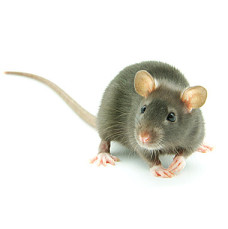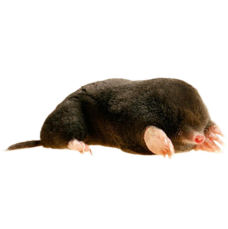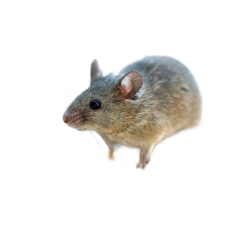Your shopping cart is empty!
Deratization
Deratization is rodent extermination. Nowadays the term is used more extensively meaning not only rat extermination, but also control of other injurious gnawing animals that are dangerous in epidemiological context and bring economic losses. Rodents can be the sources and carriers of many infectious diseases.
Rodents control. For rodent control, preventive and exterminative measures are applied. Preventive measures aim to deprive rodents of shelter and hinder their access to food. Rodents are exterminated using mechanical, chemical and, in some cases, biological methods. These methods base themselves on attracting rodents to food or water.
Exterminative measures are:
The mechanical method. It consists of catching rodents with special devices. Rats and mice are attracted to the baits, mainly food-borne ones.
The chemical method. The essence of the method lies in rodent poisoning with toxic substances - rodenticides.
There are three methods of rodent extermination with rodenticides:
Usage of foodstuffs and water as poisoned baits;
Dispersion of holes, passages, paths and other places where the rodents are found with poison;
Aeration - a method that uses gasiform chemicals.
Mechanical methods for rats and mice control, though safe in terms of environmental biology, are ineffective. Therefore nowadays rodenticides become widespread. Until recently, the most common compounds to exterminate injurious rodents were such anticoagulants as diphacinone, bromadiolone, brodifacoum. Acute poisons are zinc phosphide, difenacoum, flocoumafen, etc.
All the measures on rodents extermination are carried out by experienced personnel using proven compounds and modern equipment, which guarantees one hundred percent success. Without exception, all the carried out measures are absolutely safe for both people and their pets. For this purpose, poisonous baits are placed into special, locked with key containers; which prevents children and pets' access to them.
Moles control
Protection of vegetables, berry fields, flowerbeds and golf courses involves control of the "earth-moving" moles, water voles, etc. Earth hillocks "mole casts" give an idea of moles presence. And often this does not represent the facts.
Water vole lives everywhere and not only near water reservoirs. Therefore, the first thing to be done at the sight of a damaged lawn is to find out who has paid a visit. For this purpose it is necessary to trample the earth hillocks down. If in one day the earth hillock is restored, this means it is not a mole. In this case vertical cuts should be made in hillocks' places between two other "mole casts". 30 to 50 g of any bait for rodents should be put into the cut. It should be then closed with cardboard cutout or small plank and covered with soil. For best results the bait should be moistened with water or some water should be poured on the compound's spot.
Most importantly - the poisoned baits do not exterminate the moles.
Moles are not rodents.
These little animals are predators, and their food is live worms, beetles and larvae. Creating passages, they make their nests much deeper, up to 1.5 to 2 meters (4.9 to 6.6 feet) underground and build multitiered maze systems. The moles themselves are not rodents - they do not gnaw the plants, but CREATING PASSAGES IN THE SOIL, THEY UNDERMINE THEIR ROOTS UPWARDS, WHICH ARE THEN WITHERED. In search for food, they can damage the roots of trees, shruberries, fruit and berry plants, vegetables, ornamental flower plants, thus causing death to many plants, therefore moles' detriment can be quite extensive.
Moles activities cause great damage to swards and lawns; they destroy almost the entire grass sods. Moles can quickly raze the whole garden landscape design. If perfectly trimmed lawns or tennis courts become infested with moles, in a couple of days not a trace of perfect lawns will remain. Restoring their original state might come to considerable financial expenses for lawn owners, ideally mowed lawns aficionados or tennis court proprietors.
There is a number of "folk methods" of mole control. They include flooding the mole city, using "saucepan" traps, manufacturing various rotators and rattles, but their efficiency is not high. Sometimes odorous plants, like garlic, onion, pepper and others, are used for moles control.
Whichever of the above mentioned "folk methods" of mole control is used, it does not give 100% effectiveness. As a rule, if the moles are disturbed, they move temporarily to a new location, but afterwards return to the place they take for their lived-in home. Therefore the best way to deal with moles is by using modern remedy - Phostoxin (production of Detia Degesh) - mole and rodent killer. Phostoxin tablets are thrown into the freshly opened molehills at a rate of 5 to 7 tablets per burrow, the open spaces are closed with stones, straw or something similar (in order not to strew the tablet with soil), then the earth is rammed so that to block animals' exits.
It is also necessary for the tablets to be put into the passages, which can be detected by a probing rod in a radius of 3 meters (9.8 feet) from the molehill, as the mole rookery is usually located under the uncultivated area, either by having dug the entrance or by inserting the tablets into the opening made with a probing rod.
Tablets, getting into tunnels that have been dug by the animals, start to outgas under the impact of moisture and oxygen inside the tunnels. Gas reaches the furthest corners of the extensive system. Animals that are underground receive a lethal dose of phosphine. It takes 20 to 30 minutes for the product response time starting from the first opening of the tin; during this time it is essential for the tablets to be fully distributed.



